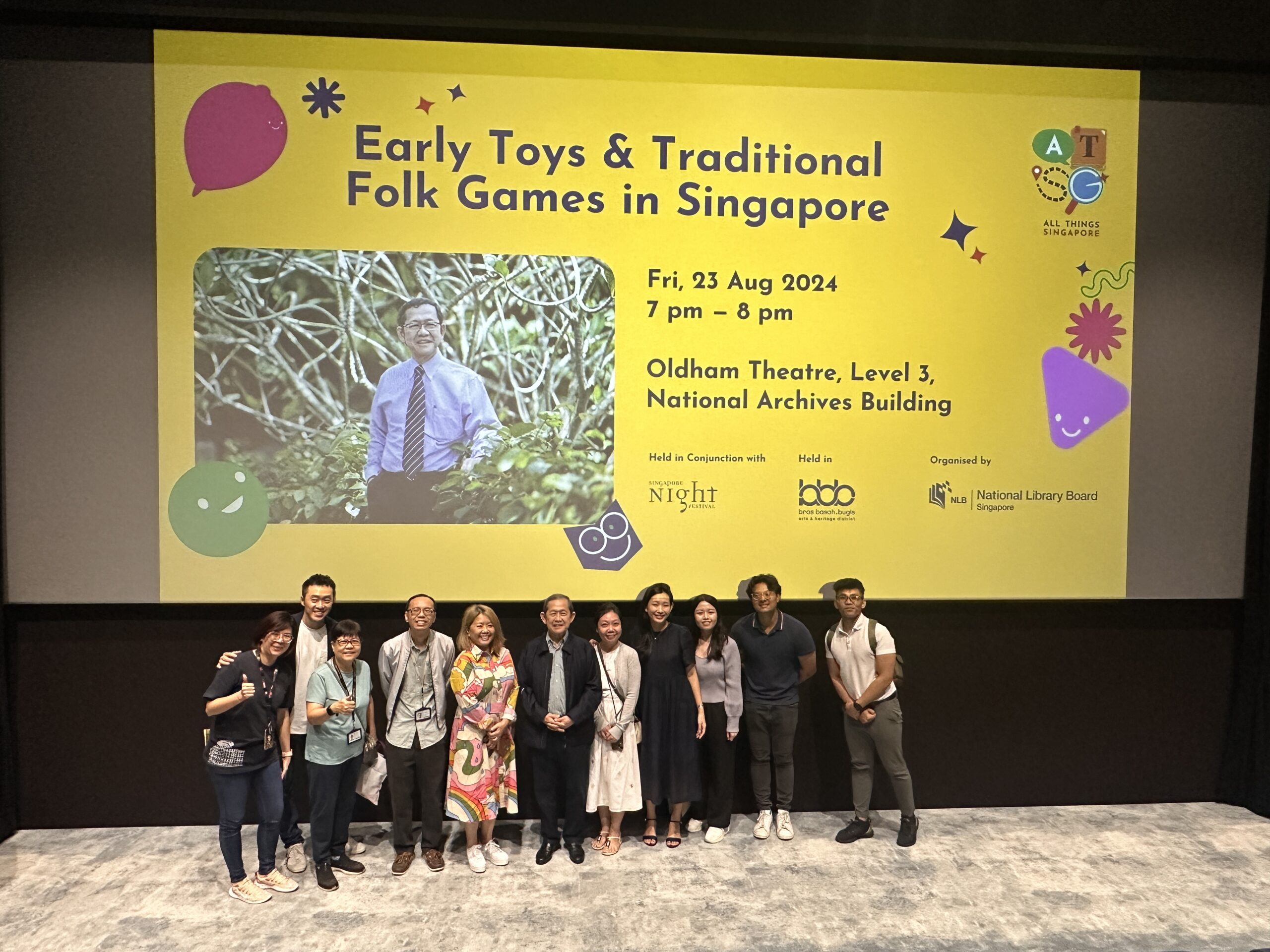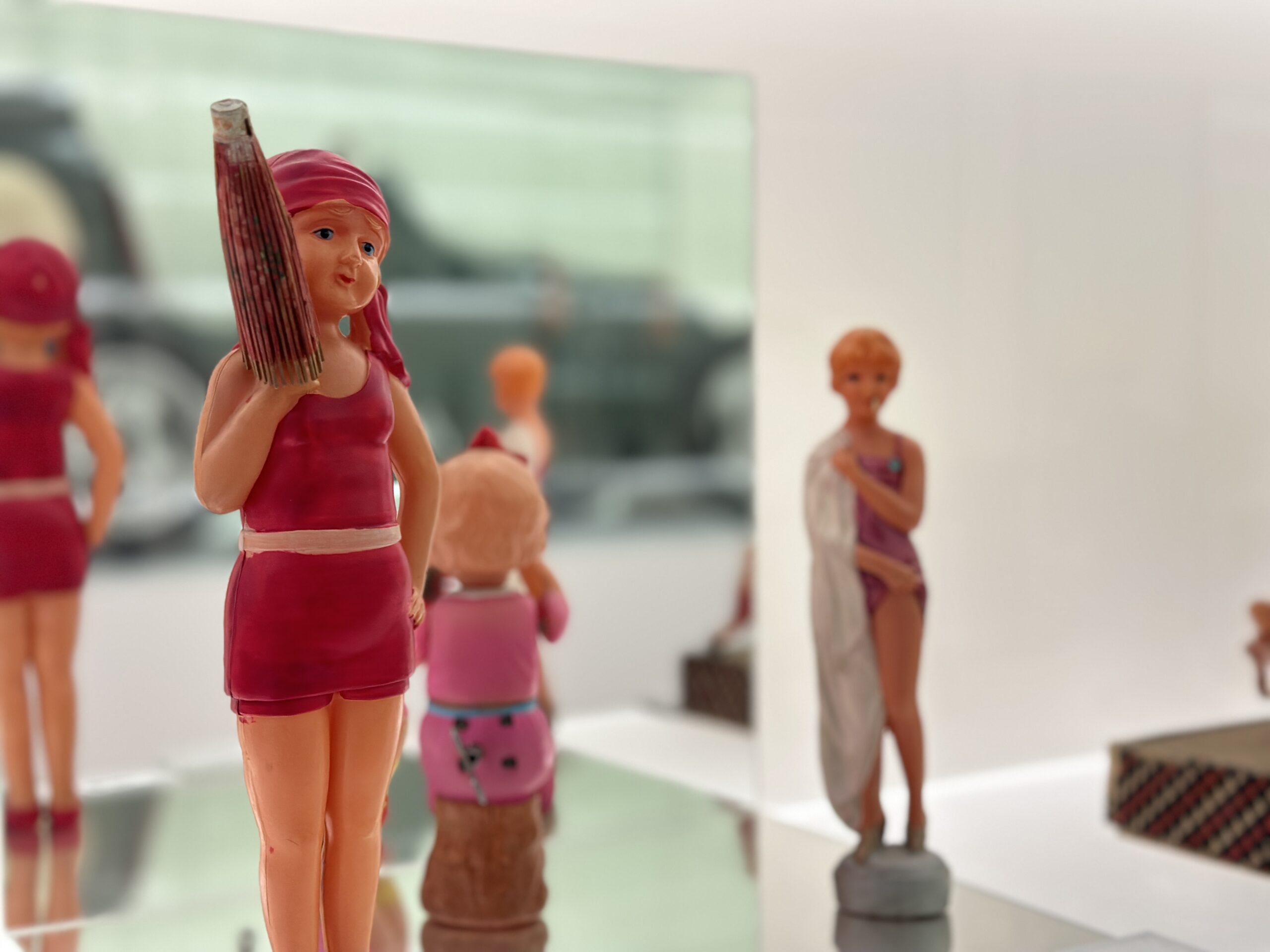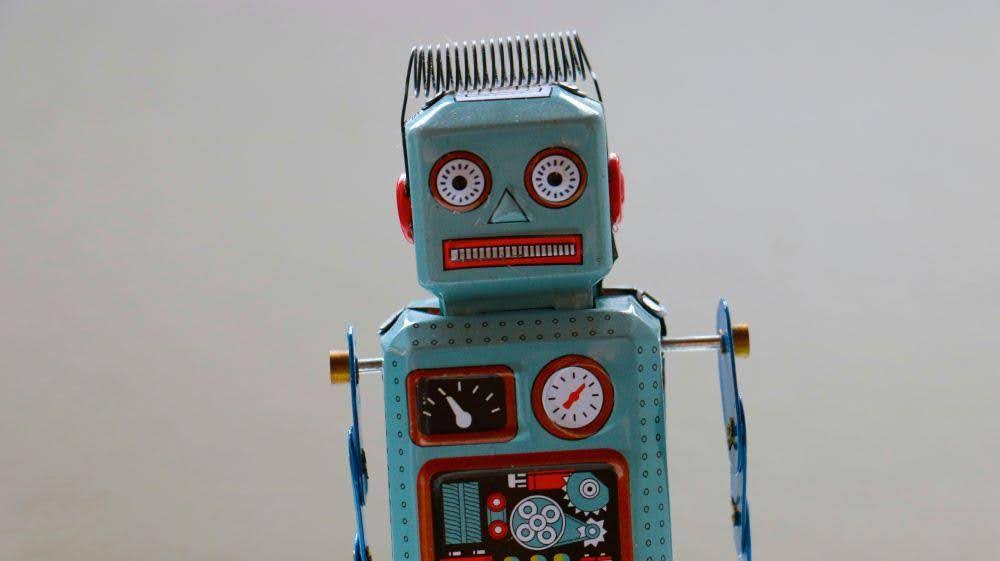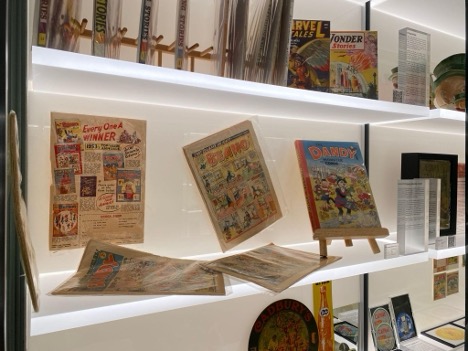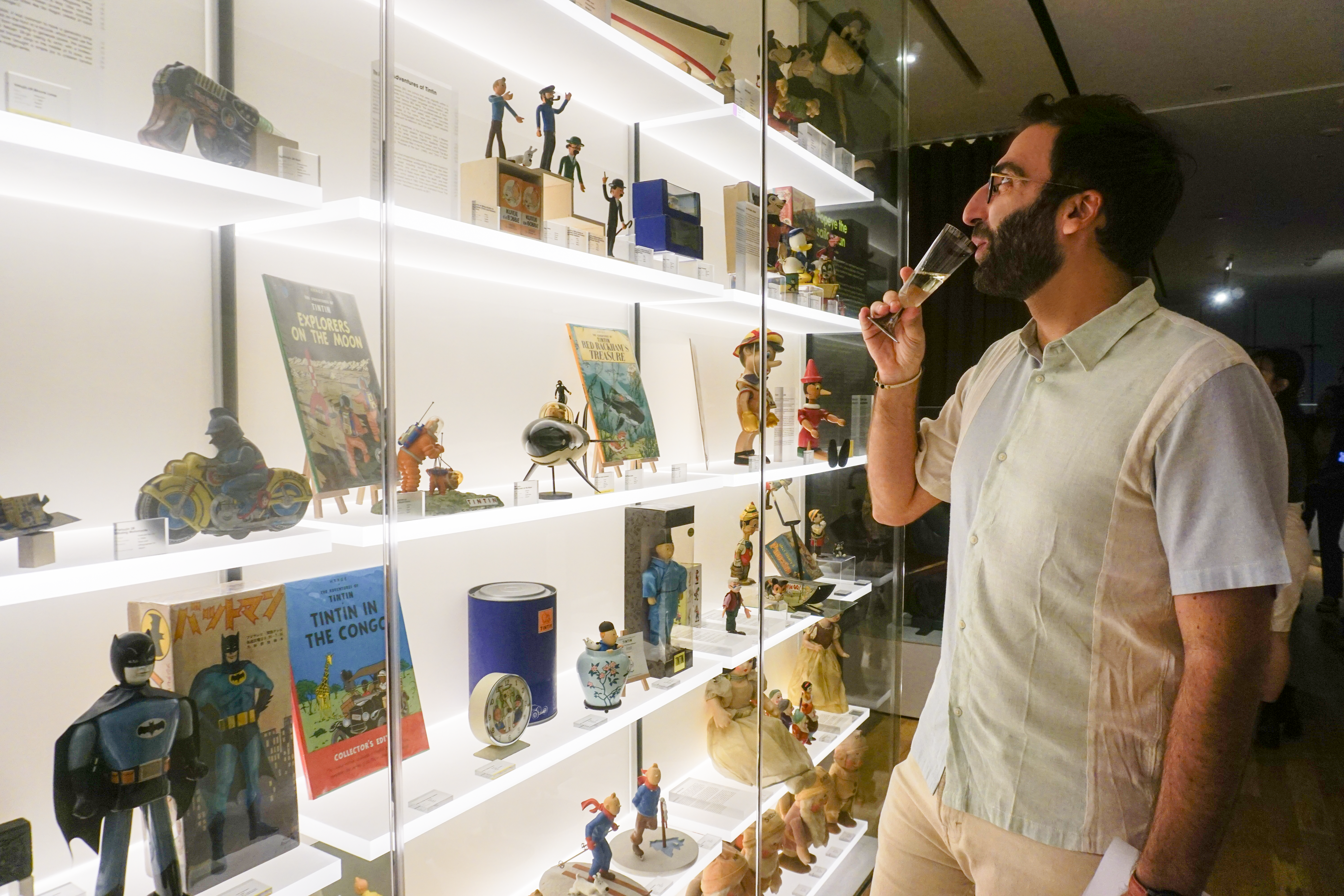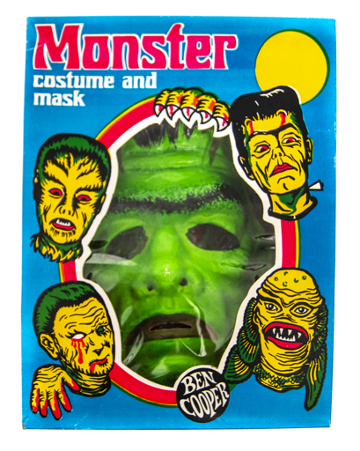By the time World War II came to a close in 1945, Japan was undergoing socio-economic and physical upheaval across many of its major cities. Although the country had invaded many other countries during the war, the atomic bombings of Hiroshima and Nagasaki towards the end of the war in particular devastated both Japan’s physical landscape and the morale of many of its citizens.
Join us as we travel through the first few decades of postwar Japan through some vintage collectible toys:
Occupied Japan
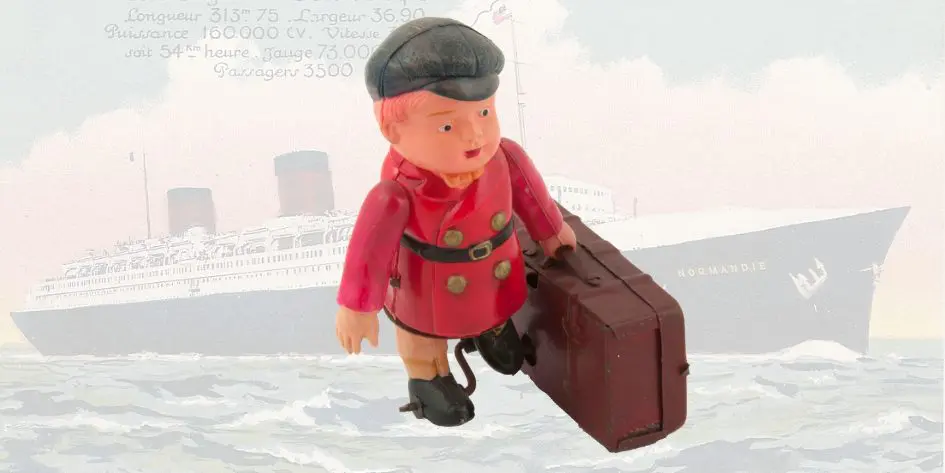
Pictured: Travelling Boy
Maker: Alps Shoji
Year of Make: 1945-1952
Material: Celluloid and Lithographed Tin
Country of Origin: Japan
From 1945 to 1952 Allied forces occupied and administered Japan as part of its postwar surrender, during which the country experienced much turmoil and rapid change in every aspect of daily and political life.
This vintage Travelling Boy is marked with a limited-edition “Made in Occupied Japan” label, making the toy extremely valuable today as a physical reminder of this short-lived period in modern Japanese history.
Notable events during this time included the Potsdam Declaration that called for Japan to become a parliamentary democracy; social and economic reforms similar to “New Deal” policies in 1930s USA; the passing of a new Constitution in 1947; and the holding of extensive military and war crimes tribunals.
Today the one thing people might remember from this era is Article 9 of the 1947 Constitution, commonly known as the “No War” clause. The clause demilitarised Japan and was a response to what people perceived as Japan being overly militaristic and aggressive during and in the years leading up to World War II.
The Constitution and other policies from this time also emphasised non-military industrial activity, both to demilitarise the country and create an economic bulwark against Communism in East Asia. It was only in 1954, after the Occupation had ended, that Japan began to experience an ‘economic miracle’ due to its supplying of munitions and logistics to US forces during the Korean War. Japan ultimately saw a return to pre-war production levels by 1950s as the country began to undergo mass industrialisation.
Economic Miracle and Emergence of the Anime Industry

Pictured: Tulip Robot
Maker: Nomura Toys
Year of Make: 1960s
Material: Plastic and Lithographed Tin
Country of Origin: Japan
From the 1950s and 1960s onwards Japan saw a shift towards new industrial developments with a focus on automobiles, electronics, ships, and machine tools. Notable Japanese brands such as Toyota, Honda, Nissan, Mazda, Suzuki, Kawasaki, Mitsubishi, and Yamaha all rose to prominence during this time as liberal economic policies allowed these companies to ramp up production and broaden their local and international markets.
This was also considered the golden era of postwar Japanese toys – particularly for the brand Nomura Toys. Many toys made during this era such as the Tulip Robot bear the diamond-shaped “T.N.” logo of their parent company, and remain a testament to Nomura’s wide reach in the toy industry.
Following the company’s establishment in the late 1940s, Nomura quickly dominated the toy marketplace with colourful tin toys embodying the emerging concept of wakon-yosai, fusing Western thought with Japanese spirit. This led to toys like the Tulip Robot which blended Western science-fiction mainstays like lithographed tin robots with Japanese R&D innovation.
The Tulip Robot features a particularly strange mechanism when turned on. The robot advances slowly on both legs, before stopping; its head then flashes in bright lights before splitting open into three petal-like sections, leading to its ‘tulip’ name. The ‘petal’ reveal a rotating central ‘stalk’ with a triple lens ‘camera’ and a television monitor which depicts a lunar landscape – reflecting the Space Age aspirations of the day.
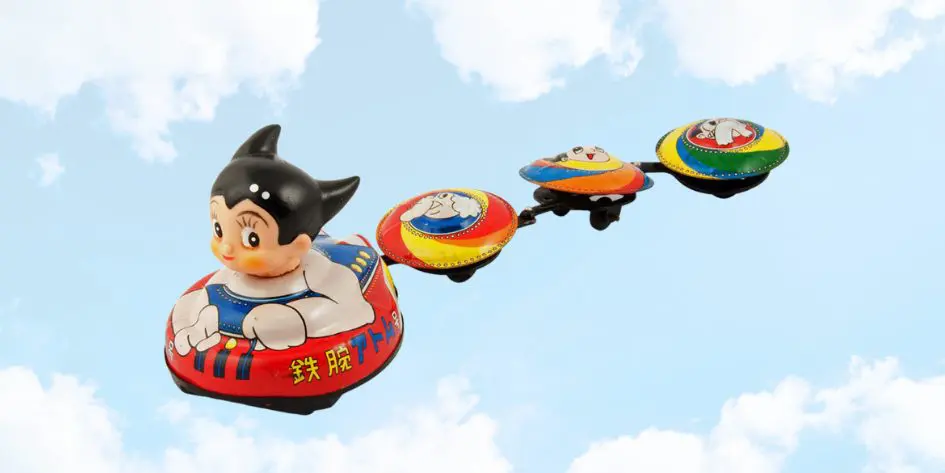
Pictured: Astro Boy on Flying Saucer
Maker: Tada Seisakusho
Year of Make: c. 1960s
Material: Vinyl and Lithographed Tin
Country of Origin: Japan
Japan’s emergence into the global toy and entertainment industries didn’t just stop with Nomura Toys. Many companies began to mass produce lithographed tin toys from the 1960s onwards, cashing in on the exponential growth of the country’s science fiction, anime, and manga industries.
Science fiction was highly popular as it helped creators explore and ask questions about the new state of Japanese society through a creative medium. The iconic monster movie Godzilla, for example, looked at issues surrounding post-nuclear devastation, whereas the emergence of the distinctive ‘dystopian-futuristic’ cyberpunk aesthetic between the 1960s to 1980s tackled fears and apprehensions surrounding the country’s rapid modernisation.
‘Mecha’ also began to emerge, putting a Japanese spin on traditional Western ideas of robots. Popular science-fiction anime and manga franchises such as Tetsujin 38-Go, Astro Boy, Mazinger Z, and Gundam all provided plenty of fodder for toymakers across the country, especially as these franchises began to gain international popularity.
Notable creators from this era included Astro Boy’s Osamu Tezuka and Akira’s Katsuhiro Otomo – names that are still said with reverence amongst fans to this day.
See More at our Toy Museum in Singapore
Vintage and old school toys such as the ones highlighted above provide a valuable window of insight into our past, leaving us reminders and lessons that we can apply to our present and future.
Pay a visit to the MINT Museum of Toys to see more postwar Japanese toys and other toys from all over the world across our various collections. Blast off to the stars in Outerspace, take a look at priceless toys and memorabilia in Collectables, see our Stairwell Collection dedicated to Astroboy, and more!
Our toy museum in Singapore is open to visitors of all ages, and isn’t just a children’s museum. Join us today to see the world through the lens of toys or book a virtual museum tour to enjoy selected collections from the comfort of home.


